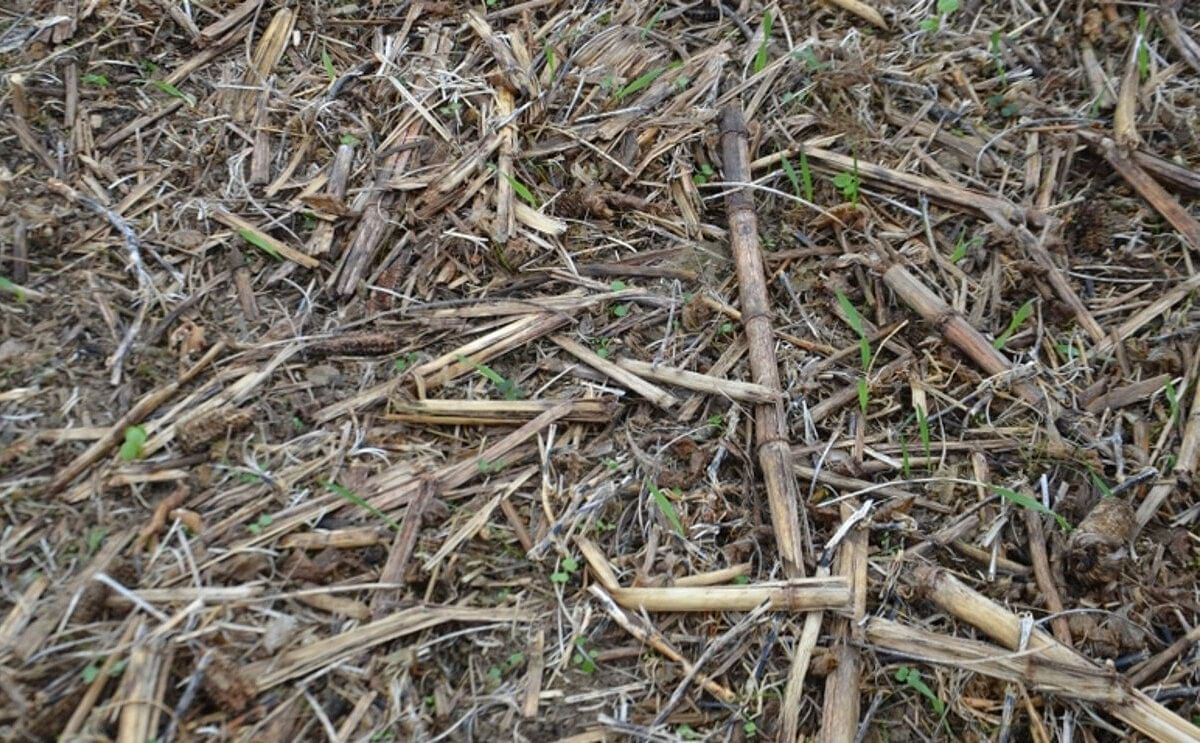Beautiful or ugly? To a no-tiller, soybean stubble with cover crops peeking through in late fall is a beautiful sight. To those who no-till, chiseling or plowing is "farming ugly."
Five reasons to skip fall tillage

Moving away from reliance on tillage is a tough change to make. Sure, there are times when tillage could be considered.
For example, a light incorporation of manure or cover crop seed can be essential, and leveling after tile installation is necessary. However, it’s not too late to consider breaking the tillage treadmill routine. You can break the cycle now by not tilling this fall. Doing so will lead to increased savings on your farm.
Here are five reasons to park tillage tools this fall:
1. Save money on fuel and equipment repairs.
How much diesel do you use? What is the cost per acre? A no-till cropping system uses, on average, fewer than 2 gallons of diesel fuel per acre. Conventional-tillage systems consume over 6 gallons.
Assume diesel fuel is USD 3.86 per gallon. On 1,000 acres, fuel for no-till would be USD 7,720. For a conventional system, fuel for 1,000 acres would cost USD 23,160.
Removing a tillage pass or not running equipment aggressively results in fuel savings. Calculate savings using this free energy estimator tool from NRCS.
2. Save time and money on labor.
How much does each tillage pass “cost” per acre or hour? The cost is more than monetary loss. Plus, it is becoming increasingly harder to find help. If you’re the one in the tractor, that time could be better spent elsewhere.
For instance, suppose you can till 18 acres per hour. You would save roughly 55 hours of work with each eliminated tillage pass on 1,000 acres.
3. Save money on horsepower.
How much horsepower do you have on your farm? Some soils “pull” differently than other soils. If soils are degraded via loss of topsoil due to erosion or crusting and loss of aggregation due to tillage or compaction from working fields under less-than-ideal conditions, tilling requires more horsepower, fuel, labor and time. That requires a larger tractor to get things done.
4. Build a resilient, sustainable and regenerative operation.
The Midwest experiences more extreme weather events today. Are the days of gently soaking rains being replaced by short-duration, more-intense rainfall? Are dry periods lasting longer?
Are summertime nights hotter? What can you do to build a more resilient agricultural and cropping system? Soils are underrepresented in discussions about yield-limiting factors. Yet they’re one of the most important resources on your farm.
5. Build healthy soil.
Healthier soil is more resilient and better able to withstand extremes. Reducing tillage, diversifying crop rotations and adding cover crops all help to reduce topsoil erosion, build soil organic matter, increase infiltration of precipitation and improve soil biology. If you are building organic matter, your soil can hold on to more nutrients and water longer.
Not all nutrients that organic matter holds are immediately available to plants, but with current input prices and longer periods of dry weather, every little bit can make a difference in yield. Healthier soil also has better structure to resist erosion.
Building healthier soil is a journey that takes time and patience. The sooner you start, the sooner you can reap benefits. Consider starting now by skipping fall tillage.
For example, a light incorporation of manure or cover crop seed can be essential, and leveling after tile installation is necessary. However, it’s not too late to consider breaking the tillage treadmill routine. You can break the cycle now by not tilling this fall. Doing so will lead to increased savings on your farm.
Here are five reasons to park tillage tools this fall:
1. Save money on fuel and equipment repairs.
How much diesel do you use? What is the cost per acre? A no-till cropping system uses, on average, fewer than 2 gallons of diesel fuel per acre. Conventional-tillage systems consume over 6 gallons.
Assume diesel fuel is USD 3.86 per gallon. On 1,000 acres, fuel for no-till would be USD 7,720. For a conventional system, fuel for 1,000 acres would cost USD 23,160.
Removing a tillage pass or not running equipment aggressively results in fuel savings. Calculate savings using this free energy estimator tool from NRCS.
2. Save time and money on labor.
How much does each tillage pass “cost” per acre or hour? The cost is more than monetary loss. Plus, it is becoming increasingly harder to find help. If you’re the one in the tractor, that time could be better spent elsewhere.
For instance, suppose you can till 18 acres per hour. You would save roughly 55 hours of work with each eliminated tillage pass on 1,000 acres.
3. Save money on horsepower.
How much horsepower do you have on your farm? Some soils “pull” differently than other soils. If soils are degraded via loss of topsoil due to erosion or crusting and loss of aggregation due to tillage or compaction from working fields under less-than-ideal conditions, tilling requires more horsepower, fuel, labor and time. That requires a larger tractor to get things done.
4. Build a resilient, sustainable and regenerative operation.
The Midwest experiences more extreme weather events today. Are the days of gently soaking rains being replaced by short-duration, more-intense rainfall? Are dry periods lasting longer?
Are summertime nights hotter? What can you do to build a more resilient agricultural and cropping system? Soils are underrepresented in discussions about yield-limiting factors. Yet they’re one of the most important resources on your farm.
5. Build healthy soil.
Healthier soil is more resilient and better able to withstand extremes. Reducing tillage, diversifying crop rotations and adding cover crops all help to reduce topsoil erosion, build soil organic matter, increase infiltration of precipitation and improve soil biology. If you are building organic matter, your soil can hold on to more nutrients and water longer.
Not all nutrients that organic matter holds are immediately available to plants, but with current input prices and longer periods of dry weather, every little bit can make a difference in yield. Healthier soil also has better structure to resist erosion.
Building healthier soil is a journey that takes time and patience. The sooner you start, the sooner you can reap benefits. Consider starting now by skipping fall tillage.
Like to receive news like this by email? Join and Subscribe!
Get the latest potato industry news straight to your WhatsApp. Join the PotatoPro WhatsApp Community!
Sponsored Content
Sponsored Content
Sponsored Content
Sponsored Content







